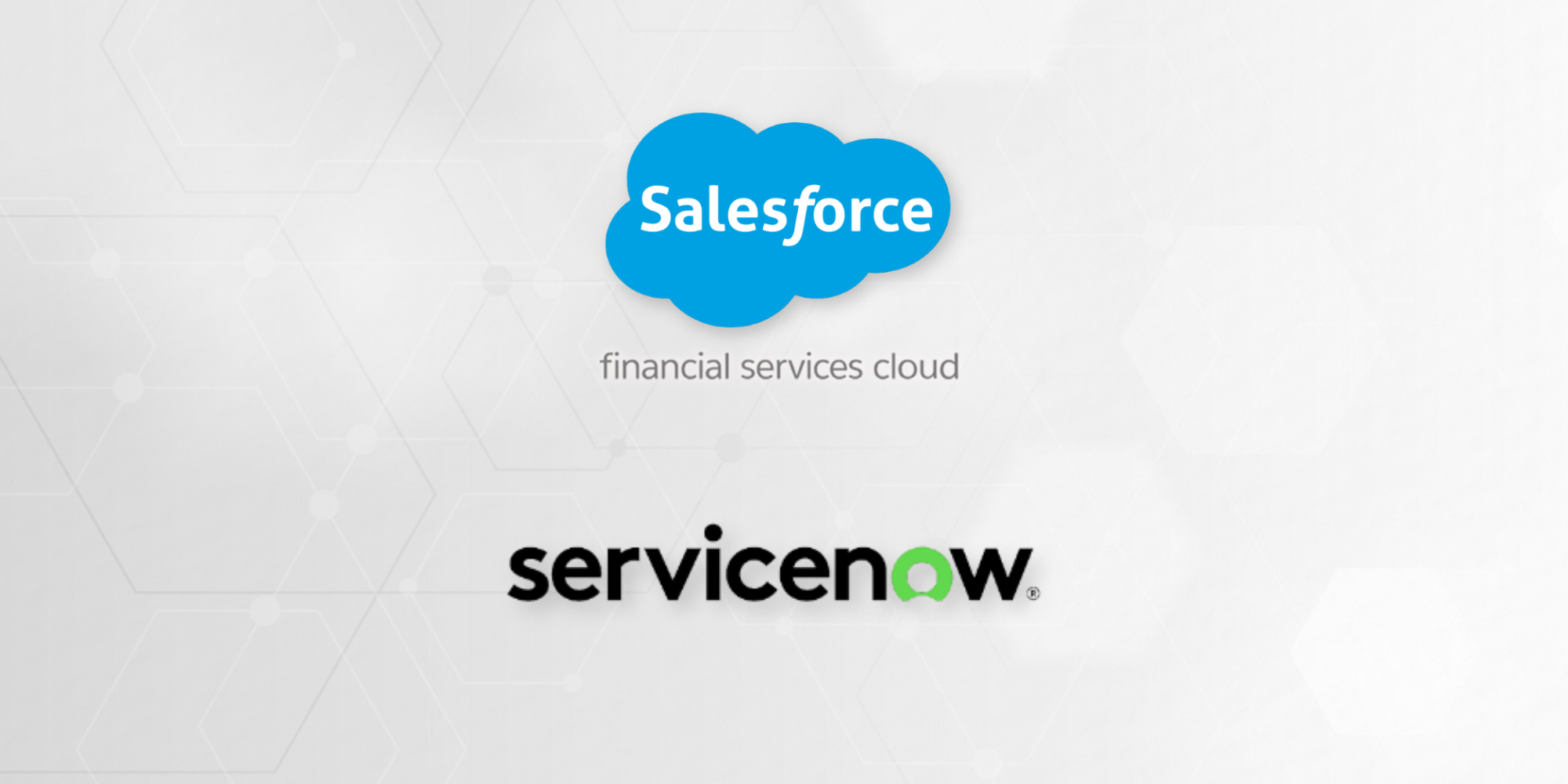At the 2025 Bank Board Forum, one question surfaced repeatedly: Where does Salesforce end and ServiceNow begin? For technology leaders, this is more than a systems question—it’s a strategic one. Both platforms have grown far beyond their original missions, and the overlap is creating pressure to choose, consolidate or define a coexistence model.
We work with banks every day at the intersection of operations and technology, and the same challenge comes up often: how to balance growth priorities with operational resilience.
That’s why we bring both platform expertise and technical advocacy, helping executives cut through vendor noise, align platforms to business outcomes, and build strategies that stick.
The conversation at the Forum reinforced what we see in our own client work: platform decisions must be anchored in business priorities—growth, resilience, compliance—and not just in functionality checklists.
Read on for a starter guide on platform considerations:
Bottom Line
- Salesforce = front office, client growth, Customer 360
- ServiceNow = back office, operational control, enterprise workflows
- The two platforms are not mutually exclusive; together, they can create a powerful front-to-back alignment of growth and operational excellence.
![]()
Consolidate only if your business strategy clearly prioritizes one paradigm over the other.
Core Strengths of Each Platform |
|---|
|
|
|
|
|---|---|---|
Sweet Spot |
Sweet Spot |
![]()
Where Overlap is Happening
Overlap is occurring primarily for two reasons: First, organizations often acquired Salesforce or ServiceNow to meet an immediate, specific need, without fully assessing whether the other platform could serve broader functions. Second, many institutions operate without a centralized governance model for platform evaluation and vendor onboarding, leading to decentralized ownership and redundant capabilities.
These overlapping areas are most evident across several core functions, including:
- Case Management: Both platforms offer strong case/servicing management.
- Onboarding/KYC: Salesforce emphasizes client engagement; ServiceNow focuses on workflow control.
- Risk & Compliance: Salesforce is expanding here, but ServiceNow has the stronger brand and capabilities in operational risk.
When to Favor One vs. the Other
Favor Salesforce if:
-
-
-
-
-
- The process is client-facing and needs relationship context.
- Data-driven personalization and engagement are critical.
- The desired outcome is tied directly to revenue growth or RM productivity.
-
-
-
-
Favor ServiceNow if:
-
-
-
-
-
- The process is primarily internal (IT, Ops, Risk, Compliance, Fraud, PMO, HR).
- Strong need for governance, SLAs, or enterprise-wide standardization.
- The desired outcome is operational efficiency, resilience or compliance
-
-
-
-
A Coexistence Strategy
For financial organizations with both platforms, a “layered” model works best:
Salesforce = Engagement Layer
|
ServiceNow = Operations Layer
|
||
EXAMPLES
![]()
Client onboarding
A client onboarding request is initiated in Salesforce; processed and governed in ServiceNow, with updates surfaced back in Salesforce for RM visibility.
RM service requests
RM service requests are logged in Salesforce; fulfillment and SLA occur in ServiceNow.
Operational risk events
Operational risk events are flagged in ServiceNow; relationship impacts are summarized in Salesforce.
Considerations for Consolidation or Alignment
|
|
Is the financial organization’s focus on client-centric growth (tilt Salesforce) or operational excellence (tilt ServiceNow)? |
|---|---|
|
|
Consolidation simplifies vendor management but comes with tradeoffs in functionality and adoption. |
Integration Readiness |
Well-integrated coexistence may deliver more value than a forced consolidation. |
|
|
Salesforce often sits with the front office, ServiceNow with IT/Operations. Clear governance is essential. |
|
|
Consider whether regulators are pushing client transparency (Salesforce) or operational controls (ServiceNow). |
![]()
Next Step
If you’re evaluating how these platforms fit into your technology landscape, the key is to align them with your business strategy. A thoughtful platform strategy can reduce duplication, increase adoption, and ensure you’re investing where it matters most
About the Authors
Meredith Rousseau is a Principal in the Banking and Financial Services practice, providing real-world experience that balances operational expertise and tactical acumen with intentional automation and technology enablement. Prior to joining SolomonEdwards, Meredith served as a senior executive for a top 10 bank and, most recently, as SVP of Payment and Deposit Operations. She is dedicated to helping propel the digital transformation of the financial industry in a practical and sound manner.
To learn more, connect with Meredith at mrousseau@solomonedwards.com.
Frank Ferriola is a Senior Vice President in the Banking and Financial Services practice at SolomonEdwards. With more than 30 years’ experience in the banking industry, he brings a strong balance of expertise across all areas of the financial organization, having worked in back office and technology roles. Frank’s focus is on partnering with institutions to design a technology strategy and digital experience to create frictionless and efficient customer and staff experiences.
To learn more, connect with Frank at fferriola@solomonedwards.com.








